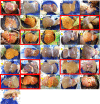Transplantation of discarded livers following viability testing with normothermic machine perfusion
- PMID: 32546694
- PMCID: PMC7298000
- DOI: 10.1038/s41467-020-16251-3
Transplantation of discarded livers following viability testing with normothermic machine perfusion
Abstract
There is a limited access to liver transplantation, however, many organs are discarded based on subjective assessment only. Here we report the VITTAL clinical trial (ClinicalTrials.gov number NCT02740608) outcomes, using normothermic machine perfusion (NMP) to objectively assess livers discarded by all UK centres meeting specific high-risk criteria. Thirty-one livers were enroled and assessed by viability criteria based on the lactate clearance to levels ≤2.5 mmol/L within 4 h. The viability was achieved by 22 (71%) organs, that were transplanted after a median preservation time of 18 h, with 100% 90-day survival. During the median follow up of 542 days, 4 (18%) patients developed biliary strictures requiring re-transplantation. This trial demonstrates that viability testing with NMP is feasible and in this study enabled successful transplantation of 71% of discarded livers, with 100% 90-day patient and graft survival; it does not seem to prevent non-anastomotic biliary strictures in livers donated after circulatory death with prolonged warm ischaemia.
Conflict of interest statement
P.J.F. is a co-founder, chief medical officer and consultant to OrganOx Ltd and also holds shares in the company, he was involved in the study design and funding application, but was not involved in the conduct of the clinical trial. C.M. is an OrganOx Ltd employee and provided the device technical support. H.M. received consultancy fees for lecturing and training activities for OrganOx Ltd. All other co-authors declare no competing interests. This paper presents independent research supported by the NIHR Birmingham Biomedical Research Centre at the University Hospitals Birmingham NHS Foundation Trust and the University of Birmingham. The views expressed are those of the authors and not necessarily those of the NHS, the NIHR or the Department of Health.
Figures





Comment in
-
Hypothermic machine perfusion before viability testing of previously discarded human livers.Nat Commun. 2021 Feb 12;12(1):1008. doi: 10.1038/s41467-021-21182-8. Nat Commun. 2021. PMID: 33579908 Free PMC article. No abstract available.
-
Reply to 'Hypothermic machine perfusion before viability testing of previously discarded human livers'.Nat Commun. 2021 Feb 12;12(1):1015. doi: 10.1038/s41467-021-21183-7. Nat Commun. 2021. PMID: 33579911 Free PMC article. No abstract available.
-
Transplantation of discarded livers: the complementary role of normothermic regional perfusion.Nat Commun. 2021 Jul 22;12(1):4471. doi: 10.1038/s41467-021-24595-7. Nat Commun. 2021. PMID: 34294697 Free PMC article. No abstract available.
References
-
- Organ Donation and Transplantation: Annual Report on Liver Transplantation. www.odt.nhs.uk (2016/2017).
Publication types
MeSH terms
Associated data
Grants and funding
LinkOut - more resources
Full Text Sources
Other Literature Sources
Medical

